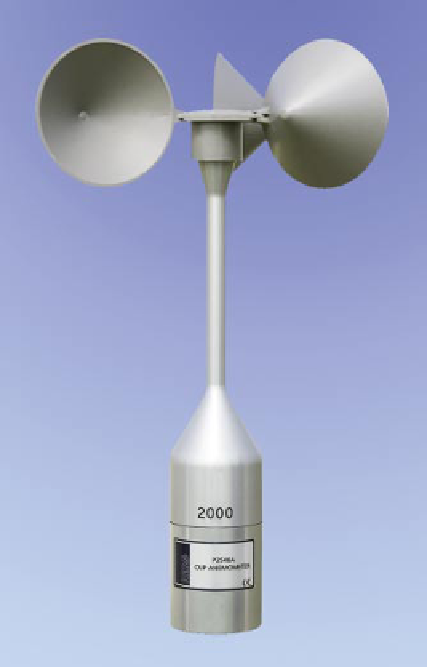Environmental Engineering Reference
In-Depth Information
Figure 4-1.
A cup anemometer.
Source:
WindSensor.
can record slightly lower speeds than cup anemometers under turbulent condi-
tions. This so-called underspeeding is caused by the prop-vane's tendency to
oscillate around the central direction or to lag behind sudden wind direction
shifts, with the result that the propeller does not always point directly into the
wind (Fig. 4-2).
Sonic Anemometer.
This instrument, which does not have any moving parts,
measures the wind speed and direction by detecting variations in the speed of
ultrasound (sound waves whose frequency is above the range of human hearing)
transmitted between fixed points. Some sonic anemometers measure wind in two
dimensions, whereas others measure in three. Because they have no rotational
inertia, sonic anemometers are more responsive to rapid speed and direction fluc-
tuations than cup or propeller anemometers. They are also usually more expensive
than other types and require more power (Fig. 4-3).
•
When selecting an anemometer type and model, the following factors should be
considered.












Search WWH ::

Custom Search